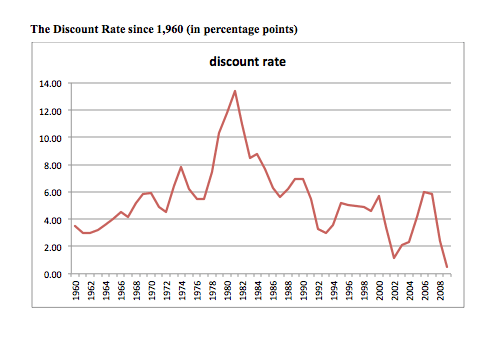The interest rate, and expected changes in its value have an important affect on financial markets in general and on the bond market in particular.
The Central Bank
The ability to change the interest rate in the US is in the hands of its central bank. The financial community closely follows every word of the bank’s chairman for any indication of his plans for the future.
America’s central bank is called the Federal Reserve Bank, and is often refered to simply as The Fed. The bank was established in 1913 and it has two central responsibilities.
- Insuring stable prices and employment.
- Supervising the commercial banking system.
The bank has an important committee called the Federal Open Market Committee (FOMC). This committee meets a few times a year and sets the bank’s plan for achieving its goals.
The Fed has three ways to affect the economy:
- Changing the interest rate.
- Changing the money supply.
- Interfering in the foreign currency market.
The History Of The Creation Of The FRB
Creating a Central Bank in the U.S. was not an easy process; a few failed trails preceded the creation of the Federal Reserve Bank.
The First Bank of the United States was created in 1791 and it was the largest corporation in the country, dominated by big banking and money interests. Many agrarian minded Americans uncomfortable with the idea of a large and powerful central bank opposed it and by the time of voting for its renewal in 1811, the Congress refused to do so.
The second attempt came in 1816, but when President Andrew Jackson was elected in 1828, he vowed to kill it. His attack on banker-controlled power touched a popular nerve in the Americans, so when the time for renewing its 20-year charter arrived in 1836, Congress refused to do so.
By the end of the century and during the first years of the XX century, bank runs and financial panics plagued the economy and consensus began to grow for the need of a central banking authority which could ensure a healthy banking system and an elastic money supply.
The good news arrived with President’s Wilson request for help from two experts: Carter Glass and H. Parker Willis which elaborated what became to be The Federal Reserve Act by December 1912 and after a year of debates the Federal Reserve Bank was finally open.
The Interest Rate
The interest that the Fed charges on loans to commercial banks is called the Discount Rate. The rate that is set for loans between commercial banks is the Federal Funds Rate. In order to change the interest rate in the market, the Fed changes the Discount Rate. This change sets off a chain reaction that leads in the end to the commercial banks charging their customers a higher interest rate.
The following graph shows how the Discount Rate has changed since 1,960.



